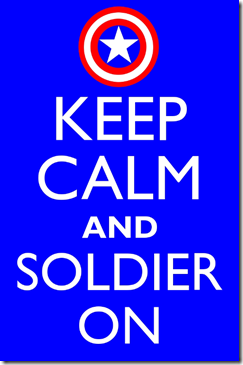Originally posted on May 12, 2020 @ 10:12 AM
 Many people underestimate the power of slogans because they function like metaphors and in many ways are hidden in language. It is impossible for humans to communicate without using either.
Many people underestimate the power of slogans because they function like metaphors and in many ways are hidden in language. It is impossible for humans to communicate without using either.
The rhythmic power of slogans and the mis-directive power of metaphors are a central vehicle for communicating. How strange, because metaphors are an indirect form of speech, we compare something to what it is like but not, in order to convey meaning. We would do well to pay more attention to the indirect methods by which we communicate, particularly as they have significant influence on the unconscious. We underestimate the power of such semiotics in safety as they often undermine the very messages we wish to communicate. Unfortunately, many dismiss the power of language with the slogan ‘that’s just semantics’.
The Chief Medical Officer (CMO) of Australia (Brendan Murphy) drew attention to a central metaphor/slogan in Australian culture yesterday (https://www.abc.net.au/news/2020-05-12/coronavirus-covid19-sick-leave-work-brendan-murphy-stay-home/12225462) and demonstrated how ‘soldier on’ was no longer appropriate for the workplace.
It is also strange that we now have an organization called Soldier On (https://soldieron.org.au/) that seeks to support ex-service personnel and yet there are elements of the slogan as a semiotic that contradict the purposes of the organization. The intent whilst good, doesn’t address the idea that the slogan is anchored to individualism. In a similar vein in building and construction it is not uncommon to hear similar slogans like ‘harden the f&%k up princess’ or ‘take a cup of concrete and harden the f&#k up’.
Of course in Australian culture, the ANZAC legend and war metaphors are central to our national identity. It is an interesting study to see how selective Australians are about the ANZAC legend and myths of war (https://www.smh.com.au/politics/federal/cry-anzac-and-let-slip-the-metaphors-of-war-20090418-aavc.html).
However, there is also an ambiguous trade-off in such language. The proverbial ‘sickie’ has always been a pejorative metaphor to project guilt on to workers and create feelings that amplify the ‘soldier on’ slogan. All Australians know what it means to take ‘a sickie’.
So now we fight (sorry) in dialectic between two deeply embedded slogans and metaphors in Australian culture brought on by Covid-19. We now have people in power and orthodoxy saying ‘take a sickie’. How alarming what a threat to traditional myths of productivity. What will we now do with the lingering metaphor of the Australian ‘bludger’? (https://en.wiktionary.org/wiki/bludger)
Understanding the power of slogans is one reason I highlight them as part of the Culture Cloud (https://safetyrisk.net/safety-and-risk-culture-cloud/). However, if you define culture as behaviour or systems (as Safety does), the power of semiotics, metaphors and slogans slip completely under the radar. This is why many in safety think ‘zero harm’ is just a group of words about targets and numbers, not realizing the power of such metaphors and slogans to completely undermine other messages about well being, care, helping and safety. The slogans of care and zero harm completely contradict each other.
The CMO stated “I think we will see a permanent change in that sort of cavalier attitude of going to work when you’ve got a cold or a flu,”
Wow, now ‘soldier on’ has been given the metaphor of ‘cavalier’, when used to be anchored to bravery, courage, harden up and ‘take one for the team’.
I often speak to people about the workaholic problem in the building and construction industry. Fatigue in the industry is a major safety issue. Even in offices and not on site, people talk about glaring eyes of an afternoon to see who leaves first.
Of course such a culture of ‘hard yakka’ is supported by the many hidden metaphors and slogans we speak at work that we rarely think about and to which we attribute little power. Often in our slogans we are anchoring people to dehumanizing ideologies in the name of good. Well now Covid-19 has put some of these cultural norms in a spin.
The CMO now sanctions the right for people at work to send sick people home and any sign of cough and sneeze will be determined as NOT thinking about the best for the team. I wonder what will happen now?
‘Sorry boss, I’ve got a blocked nose, I won’t be coming in today’. Hmmm, how does that sound? ‘Sorry boss, I’ve got a sore throat, I won’t be in today’. I wonder how this will change the culture at work? I wonder if the traditional cultural norms anchored to ‘soldier on’ and ‘harden the f&#k up’ will persevere? Will the slogans win, ‘you big wuss’!



Do you have any thoughts? Please share them below